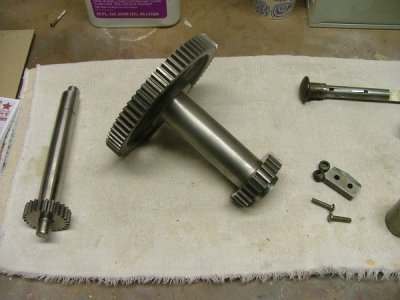- Joined
- Oct 18, 2016
- Messages
- 2,872
The back gear assembly for my 200 is cleaned up and ready to install in the headstock. I'm concerned
about lubricating the bushings once it's back together and working. Unlike the cone pulley, which has
a removable set screw, there is no "fill port" in the back gear shaft. The only way to lube the bushings
would be to dribble a little oil at the ends of the shaft, or remove it. Are other Logans like this?, and
what do you guys that have been using these machines do about lubing the back gear bushings. I was
thinking about drilling and tapping a through hole through the shaft similar to what the cone pulley, (and
my Atlas) has.
Ideas anyone?

about lubricating the bushings once it's back together and working. Unlike the cone pulley, which has
a removable set screw, there is no "fill port" in the back gear shaft. The only way to lube the bushings
would be to dribble a little oil at the ends of the shaft, or remove it. Are other Logans like this?, and
what do you guys that have been using these machines do about lubing the back gear bushings. I was
thinking about drilling and tapping a through hole through the shaft similar to what the cone pulley, (and
my Atlas) has.
Ideas anyone?


